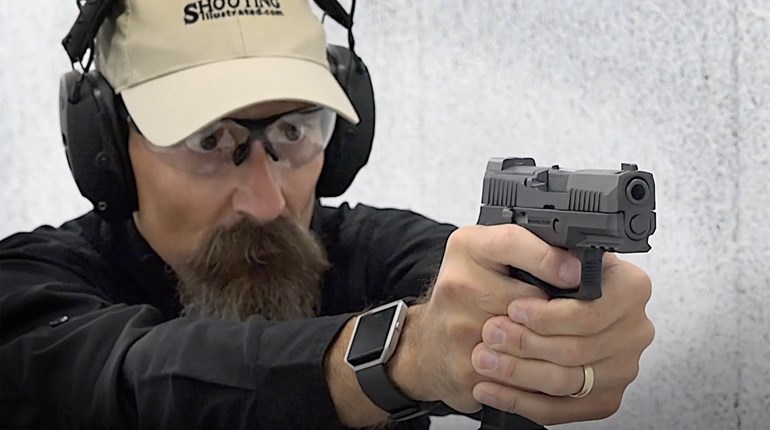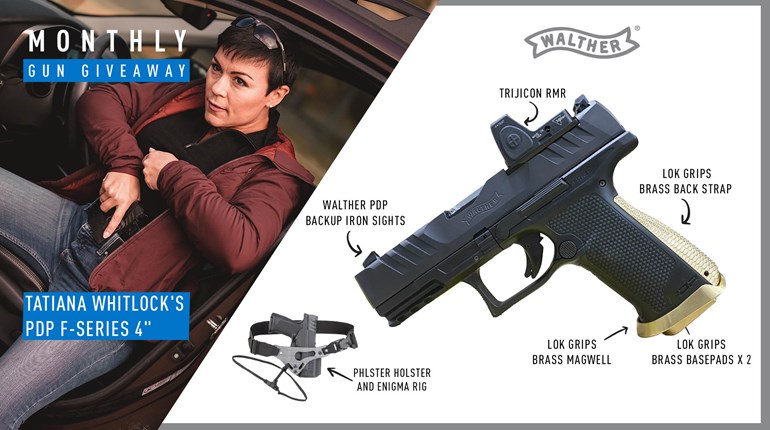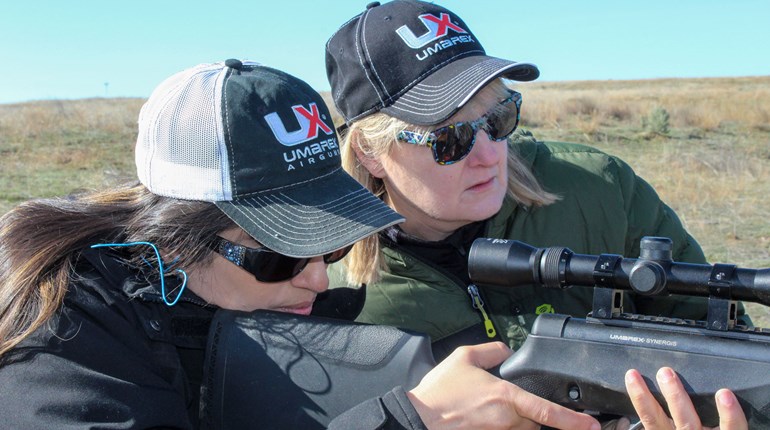
Walther Arms, located in Fort Smith, AR, has been steadily increasing its presence in USPSA. The company has sponsored the Area Four match multiple times in the past. 2017 was the first year of the Walther Contingency program, and that program happened to coincide with the arrival of the Walther Q5 Match last summer (MSRP: $849, waltherarms.com).

The Q5 Match is based on the popular and well-designed PPQ, built for both Carry Optics and Production division USPSA shooters. The Carry Optics division is the new “hotness” in action shooting competition, and the next couple of years there will be drastic changes in the guns designed for this division. Many gun companies are producing guns for the new division, so the hardware competition looks to intensify. The Production division has a much longer and well-established history, and the competition in this division by the gun industry has become as intense and exciting in the last few years as the competition among the shooters. How well will the Q5 measure up?
The Walther Q5 Match is a polymer-framed, striker-fired 9mm pistol. Being striker-fired, the pistol has a consistent trigger press for every shot, and the reset is tactile and positive. Polymer-framed pistols in recent years are expected to have adjustable back straps, and the Q5 is no exception to this trend. There is a loaded chamber indicator on the pistol, and the rear sights are adjustable for both elevation and windage. The Q5 came with three 15-round capacity magazines, and there is the option of buying some +2 base pads that could expand the overall capacity to 17+1, which is a viable capacity for Carry Optics. All of these features are necessary if a pistol is going to be seriously considered for the competition market.
The Q5 has everything that is expected from the buyers, but so do many other makes and models. For the Q5 to pull people into the Walther camp and separate from the herd will require a quality gun.
How does the Q5 do as a quality gun?
The Q5 has the long and ambidextrous slide release of the PPQ, and that makes it easy to reach and to use, if releasing the slide with the slide release is the technique that one prefers. I can drop the slide on this pistol without breaking my grip on the gun, which can be handy when negotiating a stage, and a slide lock reload somehow worked itself into the situation. The slide release is present on both sides of the gun, making it truly ambidextrous not just reversible, which is refreshing, if only the 1911 market could take a page from the Walther playbook.
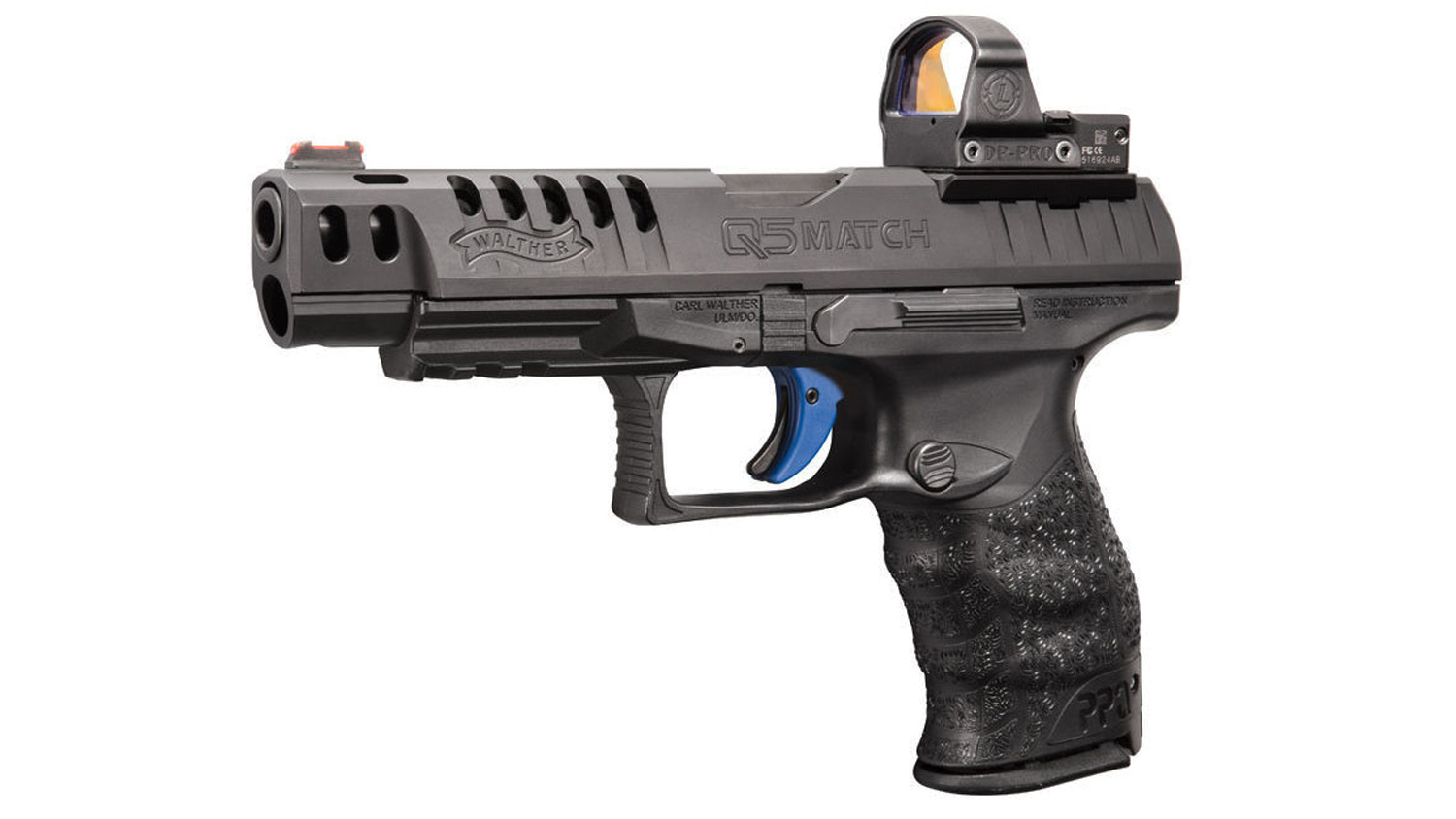
The magazine release is larger than the hubcaps on a 1975 Chevrolet Nova. The size makes the mag release easy to hit, and it is reversible for left-handers, which is another good idea from a design standpoint. During the range session, neither Jake Martens nor I hit the magazine release unintentionally despite its size, and both found it easy to hit. There is a built-in ridge of polymer below the mag release which seems to prevent it from being hit inadvertently.
My sole criticism during the initial handling of the gun at the counter at Parabellum was that it was muzzle-heavy, but of course the gun was not loaded. It felt more muzzle-heavy than other guns designed for the Production division from other leading companies. I was curious to see if this would be a factor on the range in live fire. The gun feels good in the hand and it points well, and it performs well in live fire. How the gun feels empty is of little concern and what matters is what happens on the range after the beep. Once the gun was loaded up and fired the first time, the concerns about the balance of the gun were gone, and the feel during live fire was impressive as was the accuracy. The performance of the Q5 was demanding attention. The trigger of the Q5 is blue and the color makes in very noticeable at a glance.
The trigger is very smooth and user friendly, which was not surprising having fired the PPQ. The trigger on the Q5 is smooth and breaks crisply. The reset is very short and very positive, and not clunky or mushy as other brands that could be named. If the shooter is the equal of the trigger on this gun, the results are going to be fantastic. The Q5 had a very good showing at the 2017 Optics Nationals in the Carry Optics division. If you do your part, this trigger will do its job and do it well. During the range sessions with this pistol things went well, and the great trigger on the Q5 is a big reason why. I carry Smith and Wesson M&P pistols with smoothed-up triggers. This trigger is equal to my carry guns out of the box. Glocks have a consistent trigger pull and a positive reset, but the Q5 has a lighter, smoother trigger out of the box without the clunky reset. Both Jake and I achieved better results on the range than we typically can do with a Glock trigger. CZ pistols have been very popular in the last few years due to a great trigger, especially in the single-action mode. The consistent pull and great reset make the trigger on the Q5 very good and perhaps the most complete package as far as a Production trigger on the market. The trigger separates this gun from much of the herd.
Comp-Tac provided a holster for the live fire range sessions so that we could put the gun through the paces in USPSA-type conditions. Federal provided a batch of American Eagle copper-jacket ammo that was used in the live fire segments. The bullet weights ran from 115- and 124- to 147-grains respectively. All three bullet weights worked without error in the Q5. While the majority of the shooting was done with the copper-jacket bullets—we did have some of the new Syntech ammo to try as well; all of these rounds were accurate from this gun.
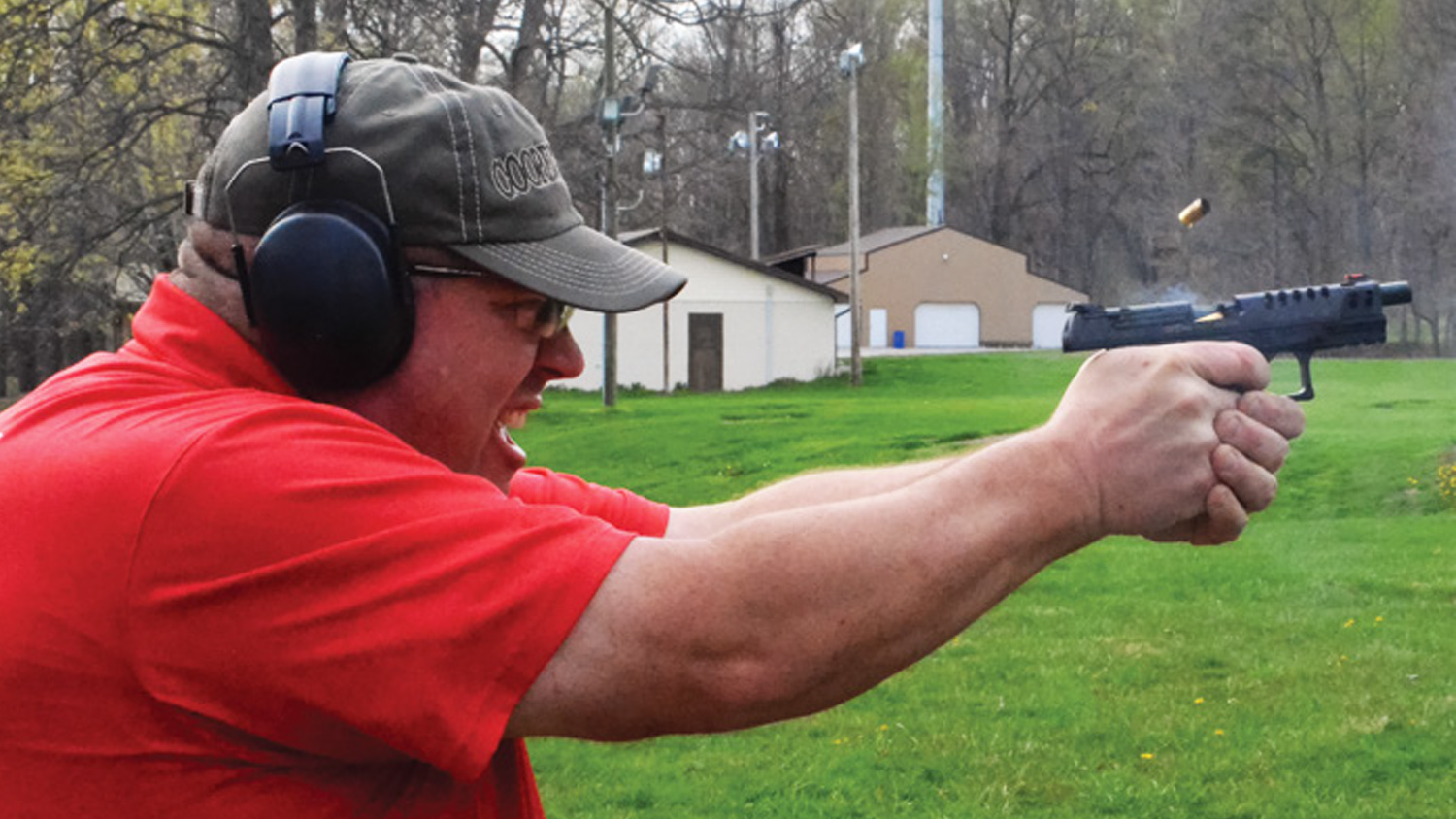
The plan was for both Jake Martens and I to fire the guns in order to have two different views in the assessment. Jake and I both have a Master Class rating in one division, and our shooting style and methods have generated very similar results over the years of shooting. However, we go about it in two very different ways, so our thought for this review was that the evaluation of the gun in live fire would be more complete with both of us involved. I appreciate him allowing me along for the ride (those targets are not going to paste themselves).
Live fire
The live fire testing of the Q5 was done in three distinct sessions for myself, and Jake fired the gun in one session. The gun was taken from the box and loaded up and fired—no cleaning, no lubrication and no inspection of internal parts prior to firing. The first firing was done during a Carry League that I teach at Parabellum. I fired approximately 100 rounds the first time out of the box, demonstrating and participating in drills for the class. I found the gun a pleasure to shoot and the trigger to be very nice. Accuracy on the drills was exceptional. The muzzle-heavy condition that I had been concerned about with the initial handling of the gun was not noticeable once the gun was stoked up with ammo.
The grip has a very different feel from the guns I carry and normally shoot. (Being from Indiana, change is not something that I typically do well.) The difference in grip was noticeable but the performance of the gun was good, and while different, I did not notice any stumbling on the draw stroke or with target transitions. I was also initially concerned that the grip of the gun seemed a little short in the length department. My large hands do not dangle off the gun, but they completely cover the grip with no room to spare. In the initial live fire the gun was set up with the medium back strap. Most of the shooting drills were in the five- to 15-yard range. I shot some groups at 20 yards as well. Several of the drills were of multiple targets on one large piece of paper at bill drill speeds. I was surprised by the ease of handling and the ability to shoot so well with the gun the very first time I fired it.
The second live fire session ran up a total of about 500 rounds. For this second session I changed the back strap to the large back strap, I liked the way this felt; it filled my hand better and made for more stability. Jake and I both fired the gun through the same drills and target arrays. The gun ran without a flaw for both of us—not a single hiccup of a malfunction through either range session despite a lack of any cleaning or lubrication. Reliability straight out of the box—how refreshing!

The rear sight has a very wide notch that allows plenty of daylight on either side of the front sight. This would seem to allow a quick target acquisition on the closer targets, and that was the case. How would it do at longer distances?
I set up a target at 12 yards and did 10 draws on the timer. The first one had a time of 1.35 seconds and was a center-punched alpha about two inches below the A-zone perf, right where I was aiming. I thought to stop right there as improvement was unlikely, but I am not a quitter, and I have the bad habits to prove it. Nine of the 10 draws ranged from 1.22 seconds to 1.35 seconds. One draw was 1.58 seconds, because I have the reaction time of an offensive lineman, and that is not a coincidence. There were nine Alphas and one Charlie shot in these draws. My conclusion was that the sights on this gun were more than acceptable.
We set up a “near to far” array next that involved three targets, at 10 yards, 15 and 25 yards, and we drew from a position facing the targets with hands at sides. My first run was 2.98 seconds and all Alphas. I was pretty pleased with that, so I did the logical thing and decided to push harder on the second run. The time was 2.88 seconds with one Delta and one Charlie. A speed focus is always problematic. Jake’s first attempt was 3.91 seconds with one Delta and a couple of Charlies. Jake is also logical and pushed hard on the second run; the time was 2.74 and the hits were the same. The sights and trigger were up to the task of 25 yards, and that is not true of all Production guns.
The next drill was the ubiquitous Bill Drill. We each took two cracks at it, one run from the correct surrender position and one with hands relaxed at sides. This was to provide a speed focus for two different types of draws and see how the handling of the gun would go. My first time was 2.36 seconds for the six shots and they were all Alphas. The second run was 2.39 seconds, all Alphas. The time is not impressive at all, but that is shooting ability, not the gun. I feel like I could stand there all day and repeat the performance; I would not get much faster, but could get the Alphas easily and on demand. Jake stepped up shot a 2.40 run with a single Charlie just outside the perf. His second run was 2.13 seconds with three Charlies, just outside the perf as well.
Our next drill was El Prez. My runs were 6.37 seconds and 6.7 seconds. Jake had times of 6.46 and 6.74 on his runs. Both of us struggled with the reload. An unfamiliar gun and no dry-fire practice was an obvious issue here. While neither of us seemed to struggle with the shooting of the gun in any drill or exercise due to a lack of familiarity with the gun, we both struggled with the reloads. However, this is a skill issue, not a gun issue.
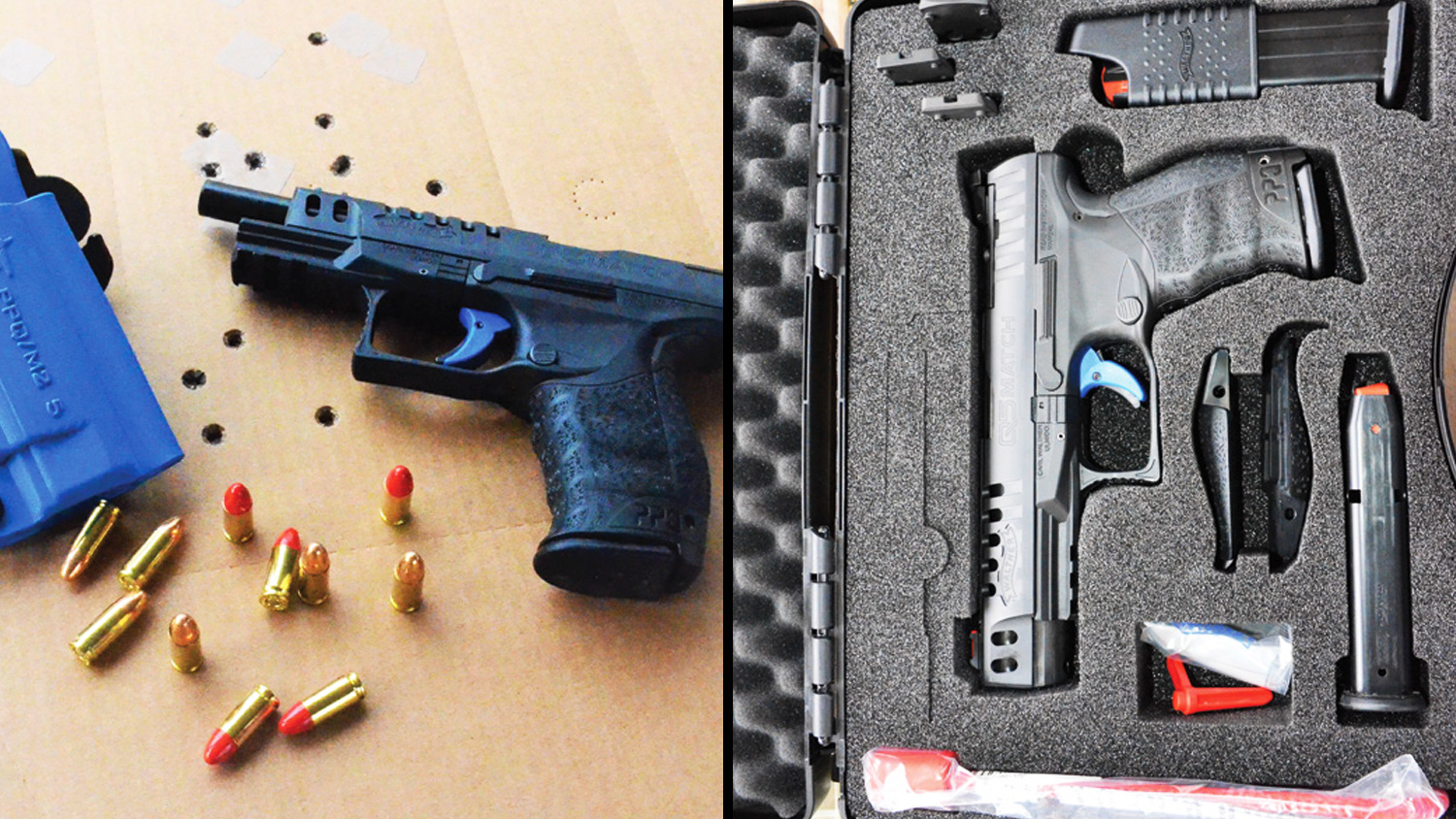
The last shooting drill that we tracked was with the targets in the El Prez configuration. We started facing the targets and did a simple two rounds per target. Jake’s two runs were both clean with good points at 2.67 seconds and 2.91 seconds. My two runs were slightly better pointwise but a little slower at 2.86 and 3.01 seconds. Once again, the gun performed very well. In all the drills presented here, we only did two runs for time. We did not do any warm-up runs. The idea was to find out how well the unfamiliar gun would handle, and we both concluded it handled very well.
Final thoughts
We shot some informal groups, SHO and WHO exercises, and plinked around after shooting the drills described above, and we came to the conclusion that the gun felt very good in the hand and was very accurate. The more familiar we became with the gun the better the results got. It would be possible to go shoot a match with confidence in the gun right out of the box.
A few days later in a second class I put about 50 more rounds through the Q5 demonstrating drills and concepts for the clients. The reliability was flawless despite no cleaning or lubrication to date. Prior to class my assistant instructor put a couple of magazines through the gun as well. Charlie is a hardcore Glock enthusiast and was skeptical about this gun with the blue trigger, but agreed to give it a short test drive. The test firing opened his mind up to the Walther significantly. If a short test drive can make a confirmed Glock guy come back singing the praises of the gun, that means it performs and shoots well. Get your hands on a Walther Q5 Match and give it a chance. You will be glad you did.
Article from the May/June 2017 issue of USPSA’s FrontSight magazine.














